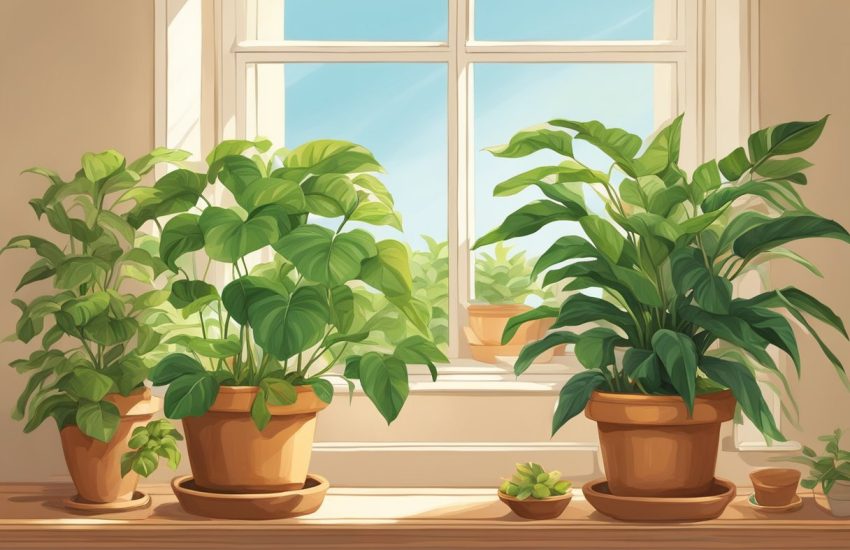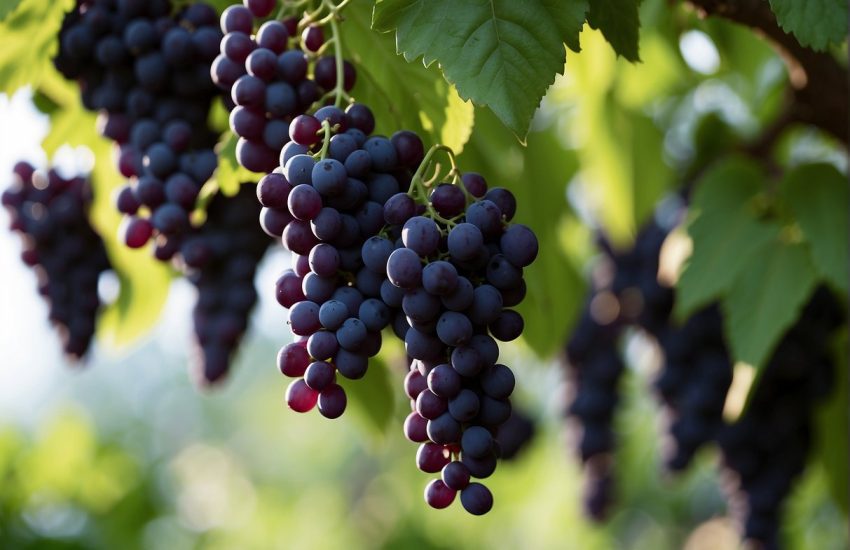Planting
Obtaining Plants and Seed
Plants and seed may be obtained from any of the nurseries or seed sources listed in our nationwide Directory of Native Plant Nursery. Using this directory, you can find a plant or seed source near your home or office. Note: if you are aware of a nursery or seed source that sells natives and is not listed in our directory, please let us know.
Unlike an industrial plant nursery, that is, a nursery that sells same standard industrial horticulture plants, native plant nurseries may experience greater shifts in their inventory. This is because the industrial plants are mass produced and there is normally plenty to go around, but native plants are specific to a particular region and fewer are produced, leaving inventories more subject to the effects of supply and demand. That said, it is always a good idea contact a native plant nursery in advance to make sure they will have the plants you want to plant when you want them.
Planting
Plants may be planted as seeds or as an existing or “live” plant. Most of the plants listed in our Regional Plant Lists are commercially available as existing plants, while a few (some grasses and some other herbaceous plants) are more readily obtained as seeds. We will discuss planting an existing plant first, followed by sowing seed.
The best time to plant a plant is during its dormant season. In North America, this will typically be late fall through early spring. Planting at other times of the year is OK (as in the case of industrial horticulture plants), but will often require more assistance such as watering (irrigation), fertilizers and/or hormone growth enhancement, etc. Planting in the dead hot of a dry summer is not recommended. Fall is particularly the best time to plant trees and large shrubs. It lets their roots get established during the winter and increases their chances of surviving a hot dry summer.
Plants will typical come bare-root or containerized, though some trees may come balled and burlapped. Bare-root plants tend to be available only from December to March.
Bare-root plants are a rare beast. To many of us that have purchased containerized plants our whole life, the thought of buying a plant without soil around the roots might seem strange. Shouldn’t a plant with "naked" roots be dead? The bare-root trade takes advantage of the fact that some plants go dormant during the winter months. These plants can be grown in a loose soil medium and extracted from that medium for transport and sale. The attractive feature of bare-root plants is that since they have no soil around their roots, they are much lighter and can be shipped at a much higher density. This results in real costs savings to the growers and this cost savings is passed on to the buyer, making bare-root plants much less expensive containerized plants.
The two most imporant thing to remember about bare root plants is that (1) they are only available in the winter months and (2) the roots must always be kept moist (though not necessarily wet). This latter point can be achieved by placing them in moist saw dust or compost or mulch, etc.
When planting bare-root plants, the hole should be at least as large as the root structure and preferably about 1.5X its size. When back-filling a hole for a bare-root plant, mixing-in some organic matter such as leaf mulch, peat moss or potting soil may be beneficial for moisture retention. Containerized plants will often already contain this material. Root growth hormone could also be used, particularly if there is reason to believe that the plant will have difficulty getting established. Root growth hormone is available from most retail nurseries.
When planting containerized or “balled and burlapped” plants (particularly trees), a hole 1.5X to 2X the width of the root ball is recommended. Transplant shock or growth hormones may also be provided, but is less important with containerized plants as compared to bare-root plants. Plants should be planted such that the base of the main stalk or trunk, often referred to as the crown, is flush with the level of the soil.
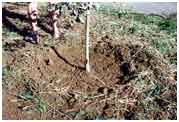
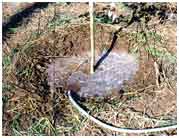

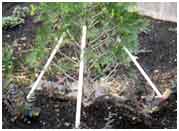
If planting a tree, it may be beneficial to create a small circular dam around the hole to hold water during watering. The area defined by the dam may also be covered with mulch to retain moisture and block growth of weeds or other "competing plants.
It may also be beneficial to stake the tree until it is established. This may be done by inserting posts and tying loosely fitting loops between the tree and posts. Alternatively, the loops may be staked directly to the ground (see photograph).
Sowing Seed
Plant seeds are an effective way are transporting new plant material to a site. They may also be preferred to existing plants in that sowing is easier than digging holes and seeds tend to cover a large area than multiple plantings of individual plants. Some grasses and some other herbaceous plants are often more readily and more economically available as seed than as containerized or bareroot plants. They may be used to create a sunny meadow or to form the herbaceous layer of a shady space. They also serve the advantageous function of blocking out most weeds.
Note that establishing a weed free herbaceous layer may take a season or two as the desired plants get established and you remove the weeds that were there.
Seed outlets are listed in our Native Plant Nursery Directory. Look for the “S” or “Sells Seed” designation in the nursery description. Seed packets for native plants may be a little more expensive than commercial grass seed, though it should be recognized that seed of native plants is often collected by hand. The Theodore Payne Foundationis a good place to start a search for native plant seeds if you live on the West Coast. Regardless of where you go for native plant seeds, be sure to investigate the origin of the seeds. There are many unscrupulous seed vendors, particularly on the web, that will allege to sell native plant seeds and/or “wildflower” seed mixes that are not in fact native and that often contain invasive exotics.
Since sowing directions may vary from plant species to plant species, please follow the directions provided with the seed packet or contact the seed provider if no instructions are included.PN

